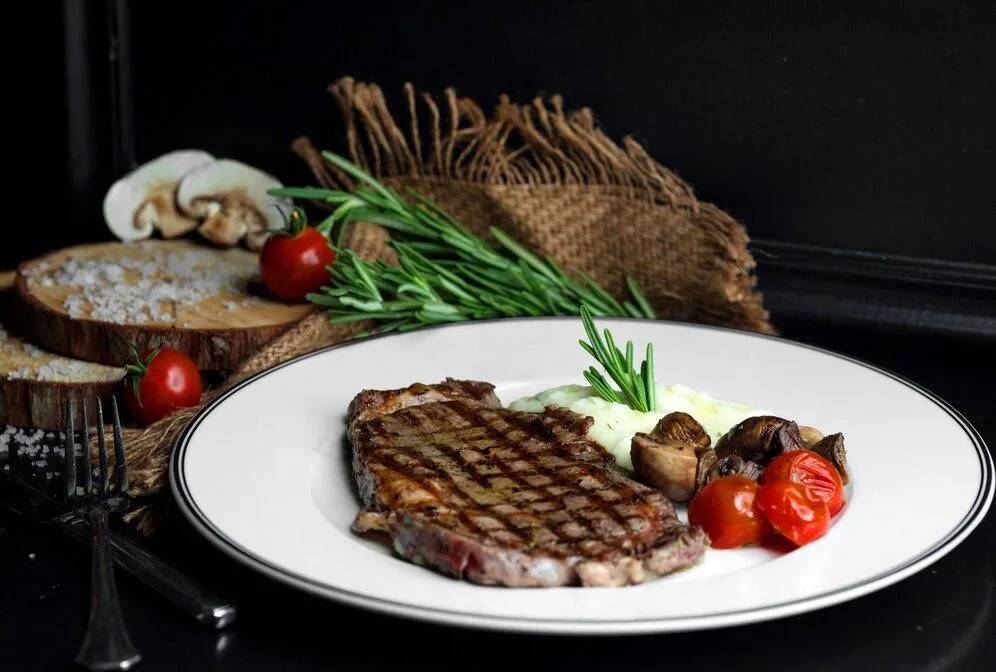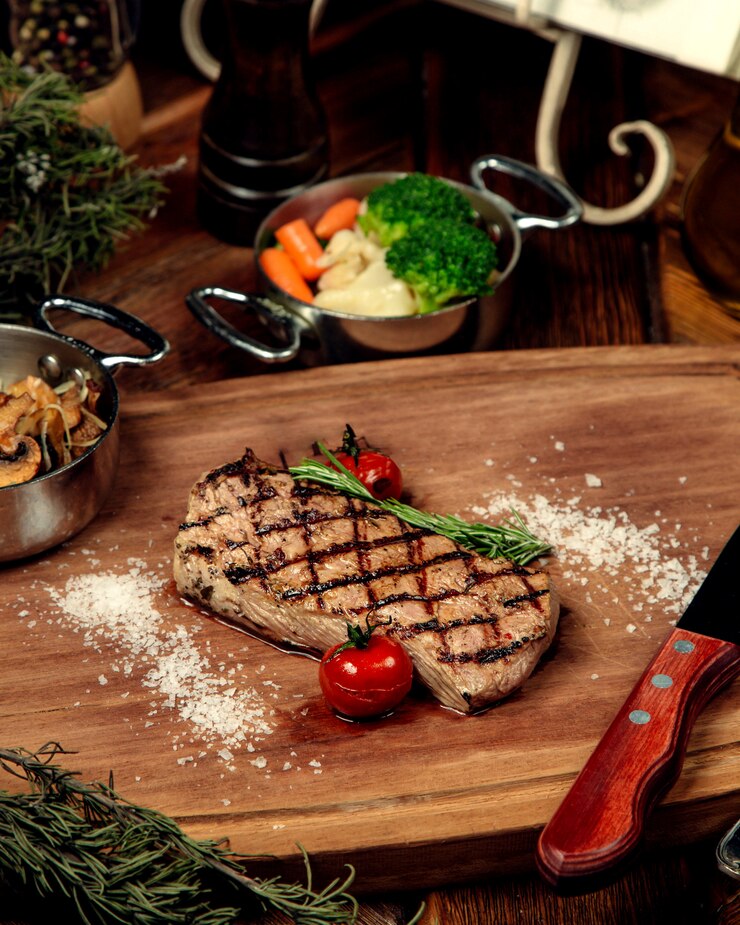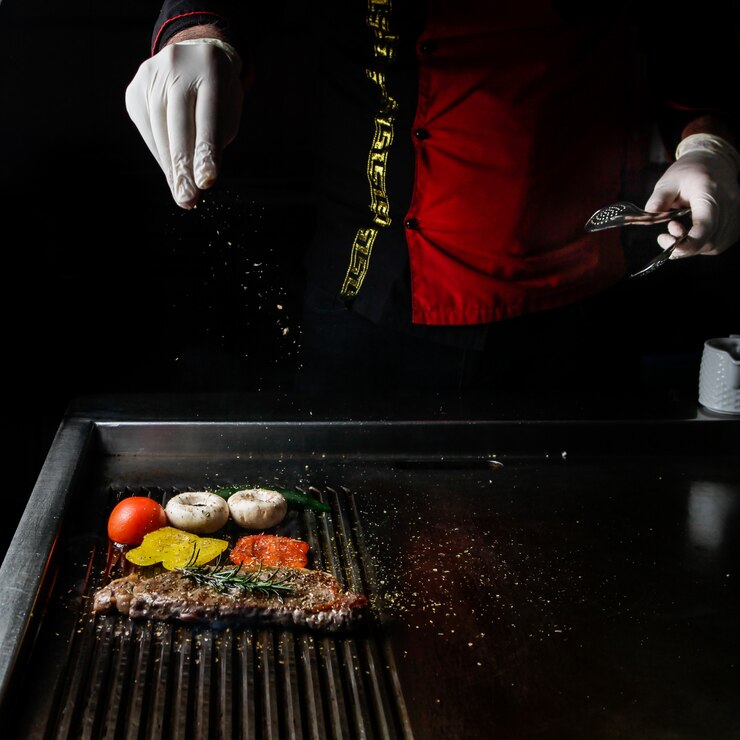
The Art of Cooking the Perfect Steak
Cooking the perfect steak is a skill that combines knowledge, patience, and passion. Whether you're grilling a ribeye, pan-searing a filet mignon, or broiling a New York strip, achieving the ideal balance of flavor, juiciness, and tenderness requires careful attention to every detail. From choosing the right cut to mastering cooking temperatures, the journey to the perfect steak can elevate any meal into an unforgettable dining experience. In this blog, we’ll explore the art of steak preparation with key tips and techniques that will make every bite a masterpiece.
1. Choosing the Best Cut of Steak

The first step to a great steak starts with selecting the right cut. Different cuts offer distinct flavors and textures, so understanding their characteristics is essential. For example:
Ribeye: Known for its marbling, which provides exceptional juiciness and flavor.
Filet Mignon: A lean and tender cut, perfect for those who prefer mild flavors.
T-Bone/Porterhouse: A combination of two cuts (strip steak and tenderloin) for the best of both worlds.
Choosing a high-quality steak from a trusted butcher or source ensures the foundation of a great meal. Look for bright red meat with good marbling and avoid cuts that appear dry or discolored.
2. The Importance of Seasoning
Seasoning your steak correctly enhances its natural flavor without overpowering it. The simplest and most effective approach is a generous sprinkling of coarse salt and freshly ground black pepper. Salt helps to draw out moisture, creating a flavorful crust when seared. Some tips for seasoning:
Apply seasoning at least 30 minutes before cooking to allow it to penetrate the meat.
Experiment with additional spices like garlic powder, smoked paprika, or chili flakes for a unique twist.
Avoid using sauces or marinades on high-quality cuts, as they can mask the meat’s natural flavor.
Keep it simple—less is often more when it comes to seasoning steak.
3. Bringing the Steak to Room Temperature
Before you start cooking, allow your steak to come to room temperature. This ensures even cooking and prevents the exterior from overcooking while the interior remains underdone. Remove the steak from the fridge 30 to 60 minutes before cooking. Pat it dry with a paper towel to remove excess moisture, which helps create a better sear. This simple step can make a significant difference in achieving the perfect texture and doneness.
4. Mastering the Cooking Temperature

The key to a perfectly cooked steak is controlling the heat. Whether you prefer rare, medium, or well-done, monitoring the steak’s internal temperature is essential. Use a meat thermometer for accuracy:
Rare: 120-130°F (cool red center).
Medium Rare: 130-135°F (warm red center).
Medium: 135-145°F (pink center).
Well-Done: 155°F+ (no pink, firm texture).
Choose the right cooking method—grilling, pan-searing, or broiling—based on the cut and your preferred style. For thicker cuts, use a combination of high-heat searing and low-temperature finishing to ensure the interior cooks evenly.
5. Letting the Steak Rest
Resting the steak after cooking is a critical step often overlooked. When the steak cooks, its juices are pushed toward the center. Letting the steak rest for 5-10 minutes allows these juices to redistribute, resulting in a moist and flavorful bite. Cover the steak loosely with aluminum foil during the resting period to keep it warm. Cutting into the steak too soon can cause the juices to run out, leaving it dry.
6. Pairing with the Perfect Sides
A steak dinner isn’t complete without the perfect accompaniments. Choose sides that complement the richness of the steak without overpowering it. Some classic options include:
Creamy Mashed Potatoes: A comforting and buttery pairing.
Roasted Vegetables: Caramelized carrots, asparagus, or Brussels sprouts add a touch of sweetness.
Steakhouse-Style Salad: A crisp salad with tangy dressing balances the richness of the meat.
Pair your steak with a full-bodied red wine like Cabernet Sauvignon or Malbec to elevate the flavors even further.
7. Experimenting with Cooking Techniques
There’s no one-size-fits-all approach to cooking steak. Different techniques can bring out unique flavors and textures:
Grilling: Perfect for smoky, charred flavors.
Pan-Searing: Ideal for achieving a crisp crust and controlling doneness.
Reverse Searing: Slowly cooking the steak at a low temperature before searing for a perfect crust.
Sous Vide: A precision cooking method that ensures even doneness edge-to-edge.
Experimenting with these methods allows you to find your preferred style while enjoying the versatility of steak preparation.